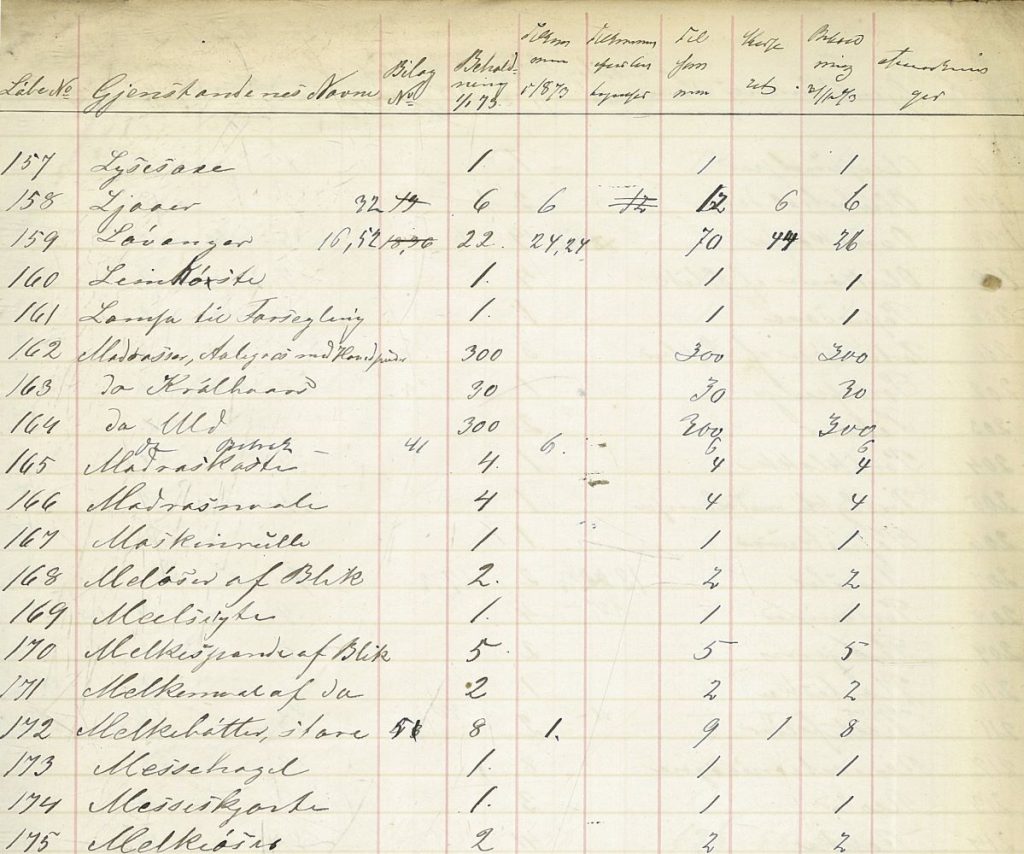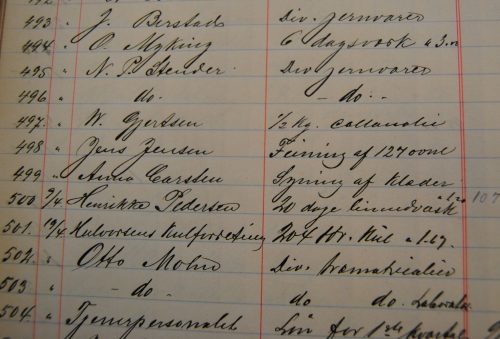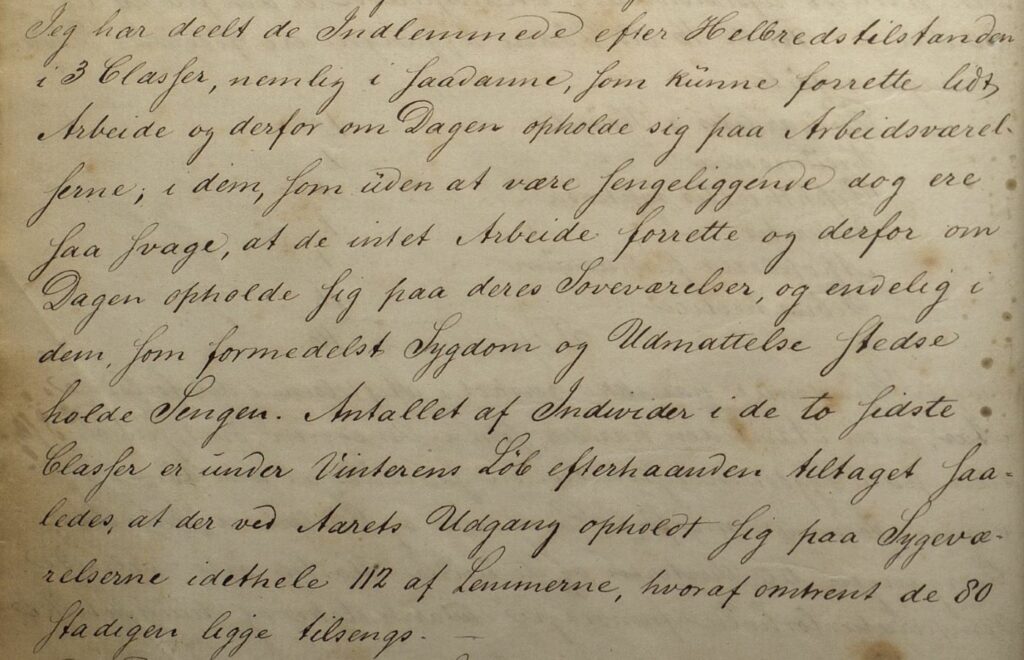Wards at Pleiestiftelsen
The rooms for the residents were relatively large and could accommodate seven people. A report from Pleiestiftelsen Hospital in 1860 describes the contents of each of the patient rooms, referred to as ‘sick wards.’
The beds were made of iron with mattresses made from eelgrass. This plant grows in shallow seawater in many places. It has traditionally been used as insulation, for upholstering furniture and padding mattresses. Some of the sickest patients had mattresses of krøllhår, a material made of animal hair, usually horse or cow hair. It was well suited for padding mattresses and upholstering furniture because it held its shape and didn’t absorb moisture.

The Regional State Archives of Bergen.
Over the mattress, there was a thinner mattress and a pillow padded with wool. In addition, there were sheets of duck cloth, a linen fabric, and wool blankets. In 1863, the annual report describes that all mattresses had to be cleaned and, in part, renewed because of ‘bed bugs.’ Several reports indicate that some of the residents re-stuffed and repaired the mattresses as part of their work duties.

The Regional State Archives of Bergen.
A few years after Pleiestiftelsen Hospital opened, wardrobes were made that stood in the wide corridors. This was described as a major advance because it meant that patient rooms could be ‘freed from a lot of the residents’ belongings, clothes and other things, for which there was previously no special repository’. Although the bedrooms were relatively large, it must still have been quite cramped given that seven people each had their own bed as well as their clothes and belongings.
Oil lamps were used for lighting, and in each room there was a wood or coke stove. One of the requisition records of those keeping track of finances in the 1890s shows that someone was paid for the ‘sweeping of 127 stoves’.

The Regional State Archives of Bergen.

Bergen City Archives.



